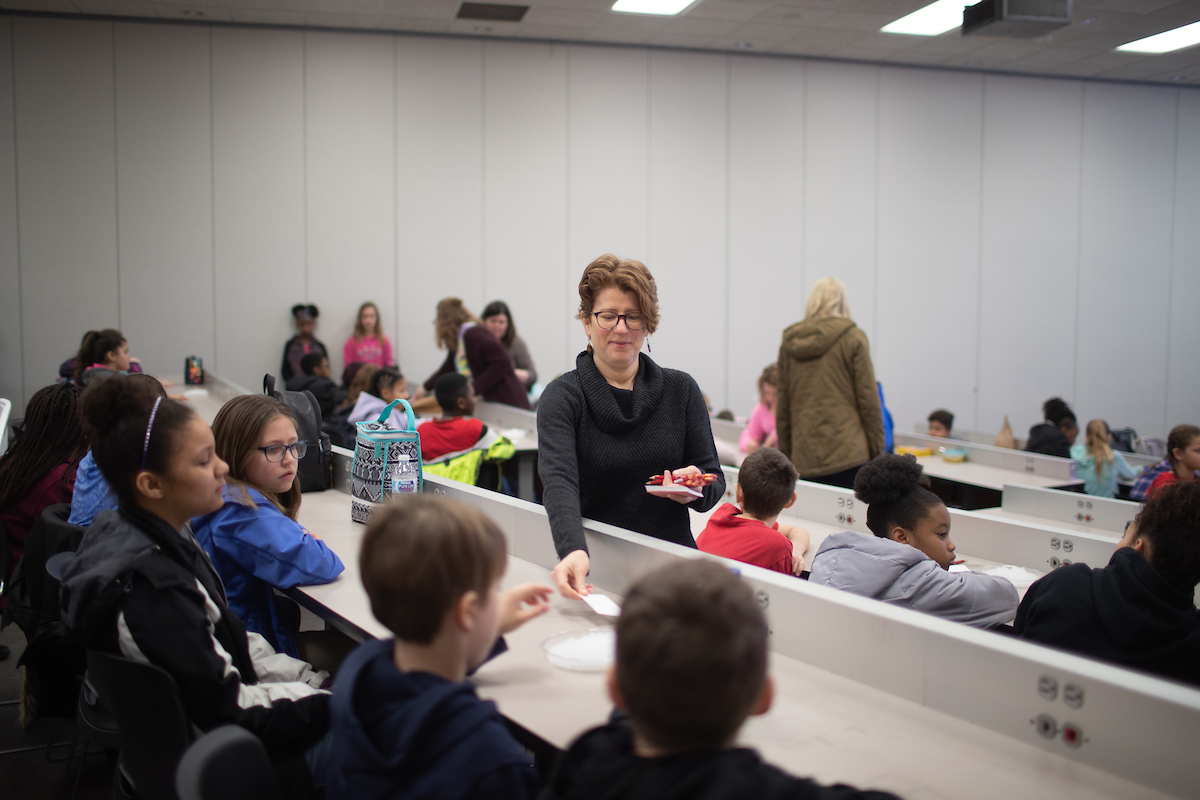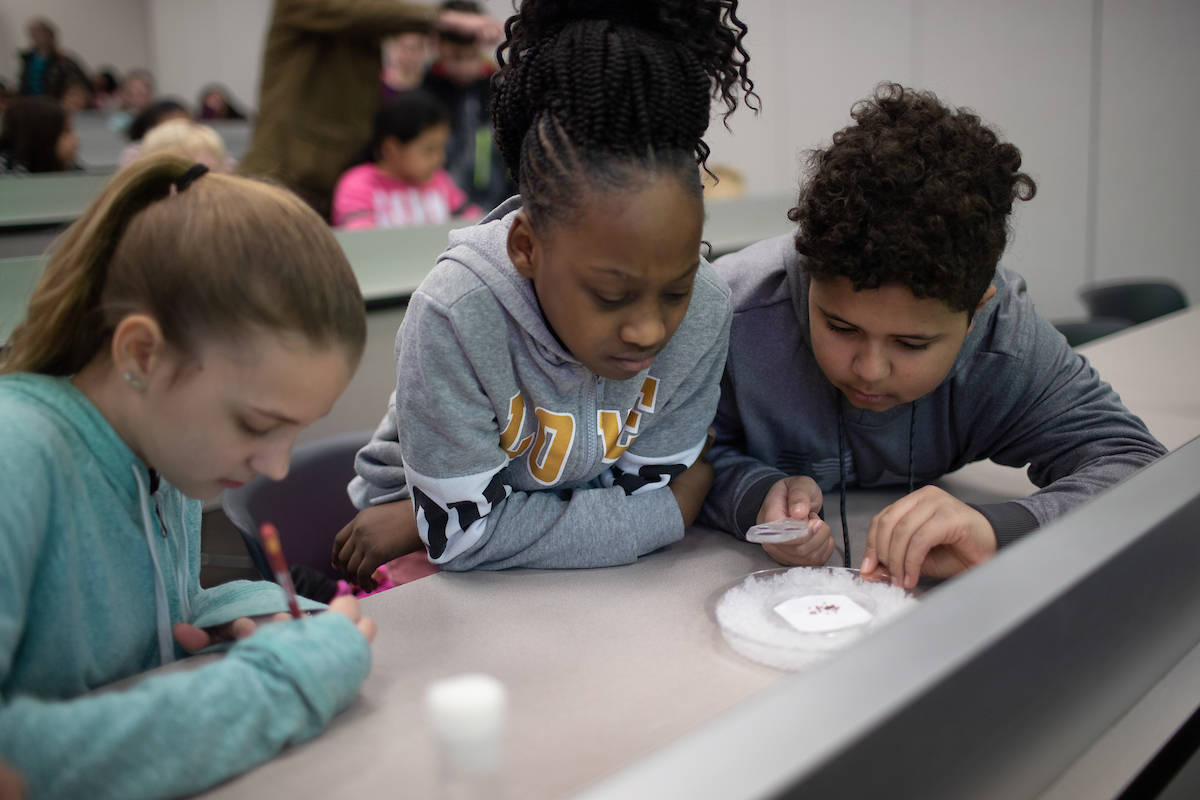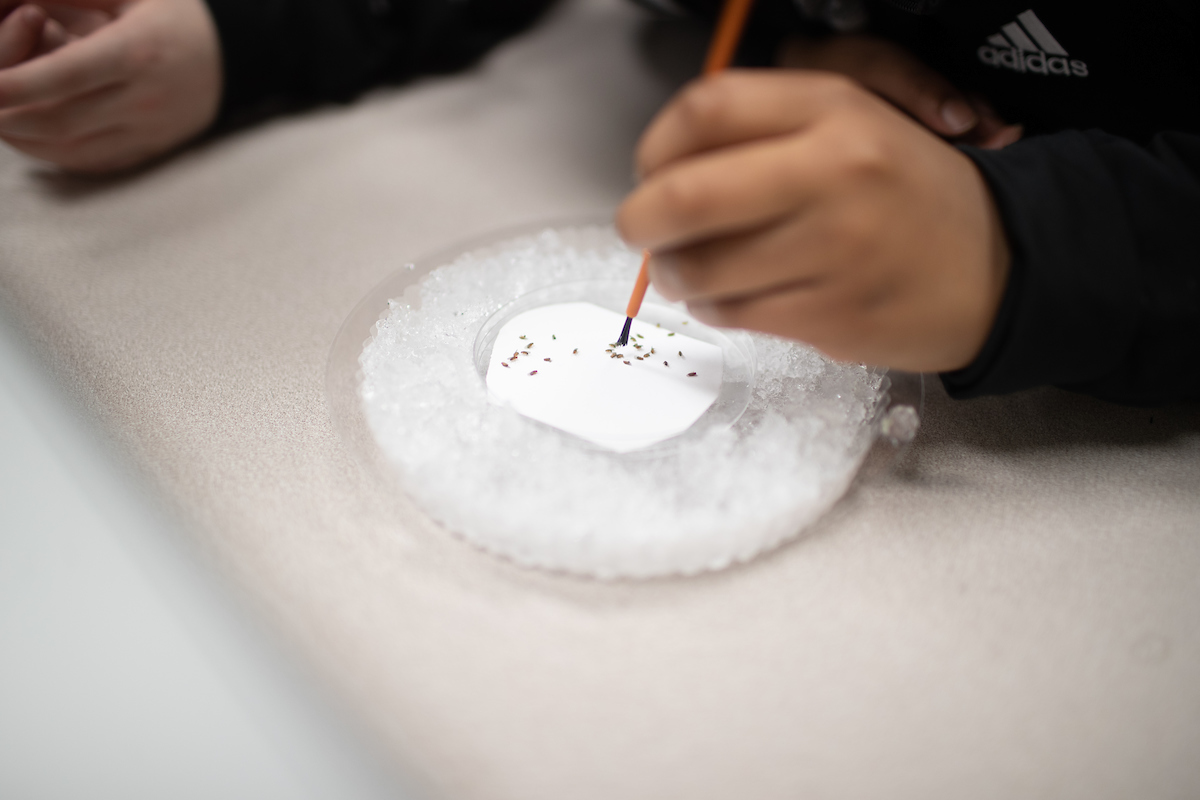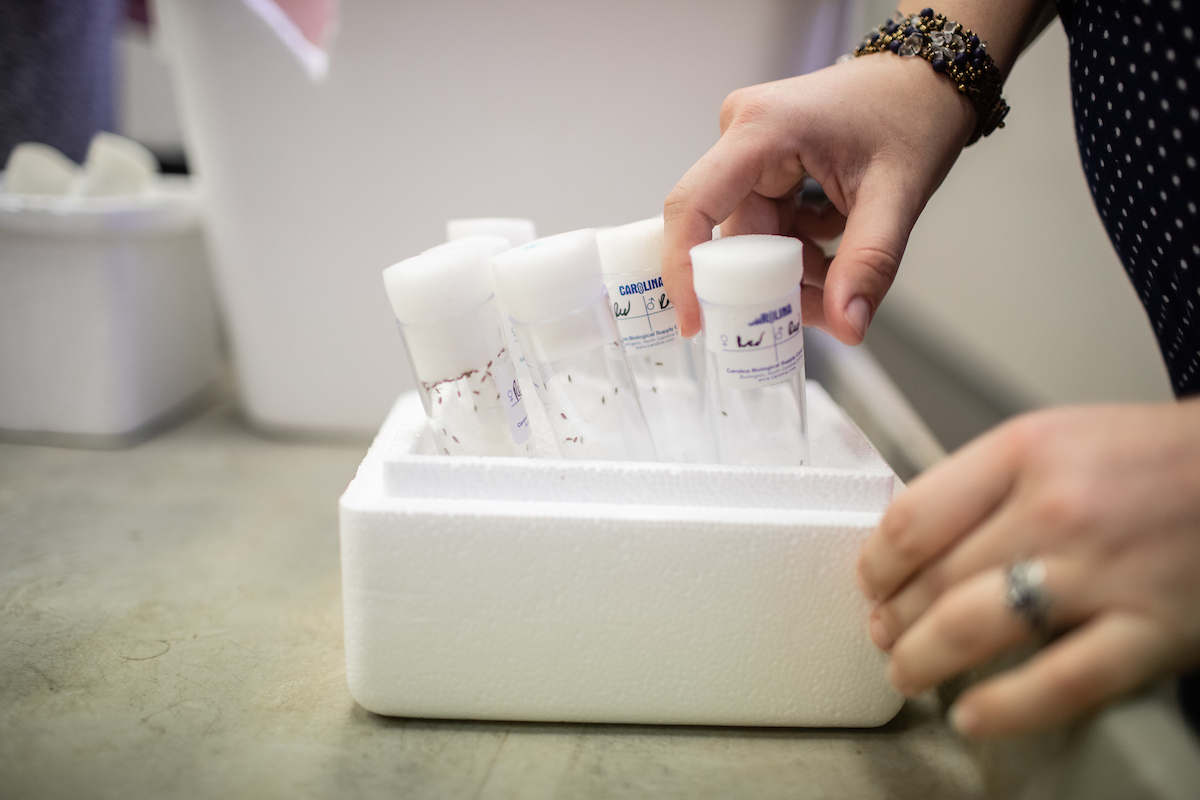Moore Magnet students, APSU biology professor pair on fruit fly experiment
(Published March 21, 2019)
About 90 Moore Magnet Elementary School fifth-graders buzzed in anticipation on a recent Friday morning in a Sundquist Science Center classroom at Austin Peay State University.
“This room is used for college classes, and we teach biology here, but you guys are in charge of this space today,” APSU biology professor Dr. Mollie Cashner announced. “You are a scientist today. You are a scientist every day, but especially today.”
Cashner has been working with the fifth-graders on a scientific experiment – genetic variation and traits of fruit flies. She visited Moore Magnet on Feb. 22 to set up the experiments, and the students visited Austin Peay on March 8 to test their fruit fly hypotheses.
When she visited Moore Magnet last month, she presented the students with three sets of fruit flies: one in which all the fruit flies had white eyes, another in which all the fruit flies had red eyes and another that had some red-eye flies and some white-eye flies. Cashner asked the students a simple question: “What color eyes will the baby flies have?”
The students hypothesized the baby flies might have red eyes or white eyes or pink eyes or purple eyes, depending on who the parents were. When the students visited Austin Peay two weeks later, they got to test their claims.
“I think some of them will be surprised,” Moore Magnet teacher Laura Baxter said. “I’m hoping they can see that organisms have variances within their traits and they can apply that knowledge to the world.”
COUNTING THE FLIES
The students – equipped with magnifying glasses, ice (to cool the flies, putting them to sleep) and Petri dishes – split into groups of four and examined the new generation of flies. They counted the flies and noted eye colors.
“These adults (fruit flies) weren’t around when I came by your class in February, they just emerged two days ago, that’s what we’re looking at,” Cashner said before visiting a group at the front of the class.
That group – made up of Kayden Binkley, Shakiah Vance, Stephanie Gordon and Ella Mullaney – reported they had counted 41 flies, all with white eyes. They were the offspring of white-eyed parents. All white-eyed offspring confirmed their hypothesis.
“I liked it because I wanted to come here and see what the fruit flies were going to do and what their eye color looked like,” Shakiah said.
Stephanie agreed: “It’s kind of cool, and we were looking forward to coming here."
COMPARING THE RESULTS
The students compiled their results and determined flies with red-eyed parents had red eyes and flies with white-eyed parents had white eyes. The group that had red- and white-eyed parents had a mix of offspring as well (90 red-eyed offspring and 58 white-eyed offspring).
None of the students reported pink- or purple-eyed flies.
Cashner explained the flies the students were working with carried two eye-color traits, one dominant (red) and one recessive (white). If parent flies have only white eyes, they’ll pass down the white-eyed trait. If they have only red eyes, they’ll pass down the red-eyed trait. If one parent has red eyes and the other white eyes, then the baby flies will have red eyes. Note: It’s a bit more complicated with male offspring because they receive only one trait.
“It’s kind of cool to think of all the different ways traits can get passed down, we can look just like our parents in some traits, and in other traits, we can look really different because it depends on how those traits are passed on to the next generation,” Cashner said.
She also told the class that scientists have been studying fruit flies for years, even in space. The flies have short life cycles and are easily handled and observed.
“Fruit flies are actually a really cool model species that we can use to study our genetics, our understanding, our inheritable traits,” Cashner told the students. “There are people that that’s what they do, they work on fruit flies, that’s their job, they’re scientists.”
BEING A SCIENTIST
“I’m a scientist, I work on fishes, but there are people who work on fruit flies and work on plants and who work on spiders and birds and mammals and cells, we do all kinds of things,” she added. “That’s what this whole job lets me get to do is think about those exciting questions and study them and think about the way the world works.”
Baxter repeated her appreciation for Cashner working with Moore Magnet and lessons the students learn.
“Having an opportunity to see what a college looks like, to be at a college classroom and to know that their future is not limited, this is a great opportunity,” she said. “I love that we partner with APSU. It’s a special relationship that Moore (Magnet) has with Austin Peay.”
Cashner and the students also are studying learned behaviors vs. instincts in beta fish.
TO LEARN MORE
- For more about the APSU Department of Biology, go to https://www.apsu.edu/biology.
- For more about Moore Magnet Elementary, go to https://mooremagnetelem.cmcss.net.
- For an interesting article about the history of fruit flies and the red-eye, white-eye experiment, visit https://www.yourgenome.org/stories/fruit-flies-in-the-laboratory.
News Feed
View All NewsNo items to display



